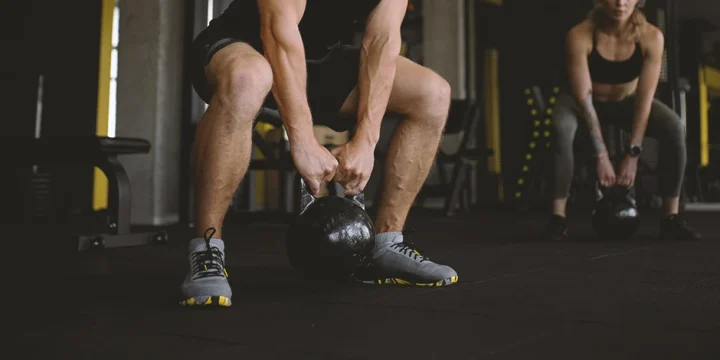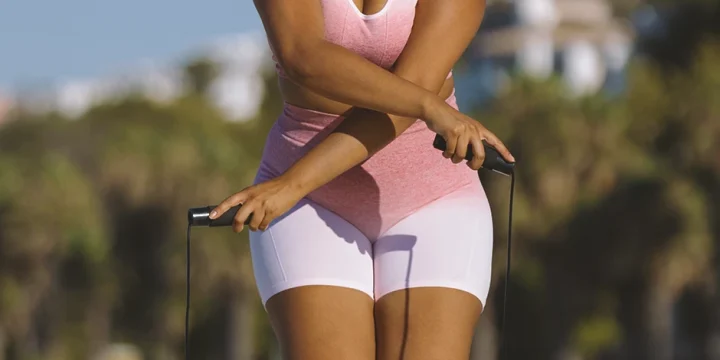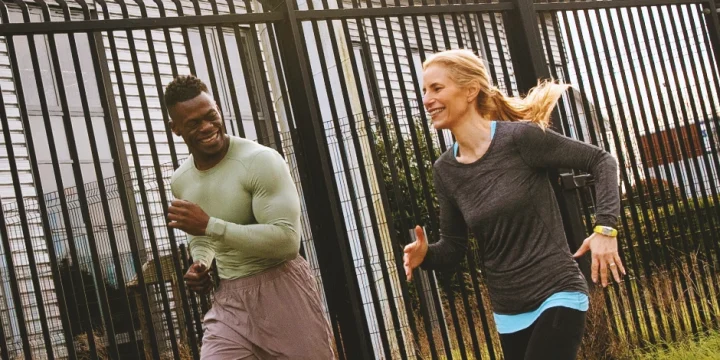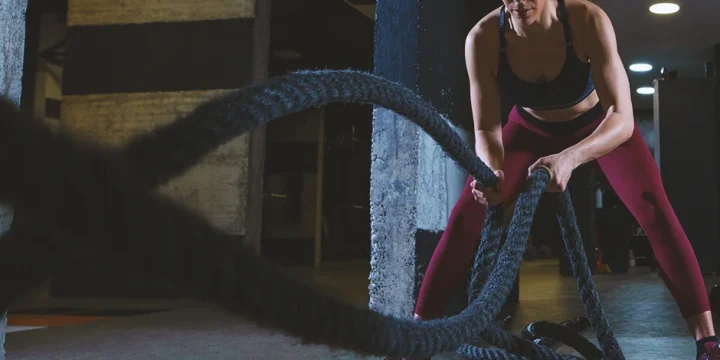HIIT (high-intensity interval training) and LISS (low-intensity steady state) are popular workout approaches catering to different fitness goals and preferences.
Understanding the differences between these exercise methods can help you choose the most suitable one for your needs and maximize the benefits of your training regimen.
As a fitness professional, I will delve into HIIT vs. LISS, exploring their unique characteristics, benefits, and considerations in this article.
Whether you're seeking to boost cardiovascular fitness, burn calories, improve endurance, or find a workout routine that aligns with your lifestyle, this comprehensive comparison will guide you.
Quick Summary
- HIIT involves short bursts of intense exercise followed by brief recovery periods, while LISS entails longer, steady-state aerobic activities at a moderate intensity.
- HIIT offers quick, intense workouts that boost heart rate, cardiovascular health, and metabolism for ongoing calorie burn, while LISS provides a gentler, endurance-building option suitable for all fitness levels, ensuring a comfortable and enjoyable workout.
- Research from the National Institute of Health suggests that combining HIIT and LISS can provide a well-rounded approach to achieving fitness goals.
- In my view, HIIT's ability to deliver quick, effective workouts and LISS's suitability for longer, less intense sessions cater to different preferences, making both essential for a diverse fitness regimen.
HIIT vs. LISS

HIIT and LISS are contrasting workout approaches that offer different benefits and cater to varying fitness goals.
HIIT has been a game changer to my clients who were seeking for time-efficient workouts, maximum calorie burn, and improved cardiovascular fitness in shorter durations.
LISS is suitable for individuals looking for low-impact, longer-duration workouts that enhance endurance, burn fat, and provide active recovery.
According to the National Institute fo Health (NIH), combining HIIT and LISS into your fitness routine can offer a well-rounded approach to achieving your goals [1].
Let's compare the key characteristics of HIIT and LISS:
Intensity
HIIT
HIIT workouts involve short bursts of intense exercise performed at maximum effort.
These high-intensity intervals are typically followed by short recovery periods or low-intensity activity.
LISS
LISS exercises maintain a consistent, moderate intensity throughout the entire session. The focus is on sustaining a steady pace without significant variations in effort level.
Duration
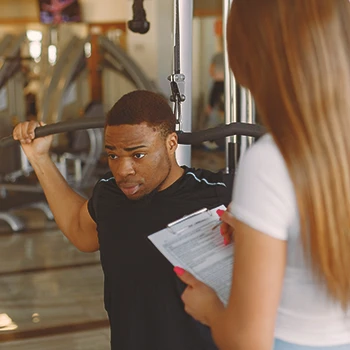
HIIT
HIIT workouts are typically shorter in duration, ranging from a few minutes to around 30 minutes.
The high-intensity intervals are performed in a structured pattern, with rest periods in between.
LISS
LISS exercises are longer in duration, usually lasting 30 minutes or more.
The emphasis is on maintaining a steady state of exercise for an extended period without the need for structured intervals.
Cardiovascular Fitness
HIIT
HIIT is known for its ability to improve cardiovascular fitness rapidly.
According to NIH, the intense intervals challenge the heart and lungs, promoting cardiovascular endurance and efficiency [2].
LISS
LISS exercises improve cardiovascular fitness by improving aerobic capacity and endurance over longer durations.
While the intensity is lower, LISS still benefits heart health and stamina.
Read More: Low-Intensity Cardio 101 Guide: Benefits and Example Workouts
Calorie Burning and Fat Loss
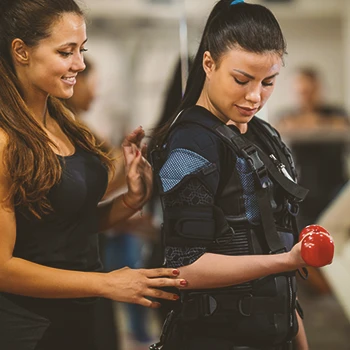
HIIT
HIIT is highly effective for burning fat and calorie loss. Contrary to popular belief, the duration of LISS cardio does not necessarily equate to burning more calories.
HIIT sessions can actually result in higher calorie expenditure. The intense intervals elevate the metabolic rate, leading to increased calories burned during and after the workout.
LISS
LISS workouts primarily rely on fat as a fuel source, making them effective for burning fat when performed for extended periods.
However, the calories burned during a single session may be lower compared to HIIT.
Muscle Preservation
HIIT
HIIT workouts can help preserve muscle mass while promoting fat loss.
The intense nature of HIIT stimulates muscle engagement and can contribute to overall muscle tone.
LISS
LISS cardio is generally not effective for preserving or building muscle mass compared to HIIT. However, they can be a suitable complement to a comprehensive fitness routine.
What Is HIIT?

HIIT stands for high-intensity interval training. It is a type of exercise regimen that alternates between short bursts of intense exercise and brief recovery periods.
HIIT workouts consist of intense exercises for a set time, followed by brief rest or light activity. This high-intensity and recovery pattern repeats for several rounds.
HIIT not only builds lean muscle but also triggers an after-burn effect, known as EPOC, boosting oxygen consumption as your body works at full throttle.
After completing a HIIT session, your body continues to consume oxygen at an elevated rate during the post-exercise period to restore various physiological processes to their baseline levels.
Even after a HIIT workout, your body keeps working hard, repairing muscles and refueling, boosting metabolism and calorie burn for a while. The afterburn effect ramps up calorie burning and fat loss.
NIH research shows HIIT's intensity amps up metabolism more than low-intensity workouts [3]. You can tailor HIIT to running, cycling, bodyweight moves, or mixed circuit training.
"When looking to lose weight, it’s important to focus on what type of weight you lose. Focusing on building or maintaining lean body mass through resistance training (rather than just losing weight) should be a priority.”
- Mary Wing, Certified Personal Trainer
What Is LISS Cardio?
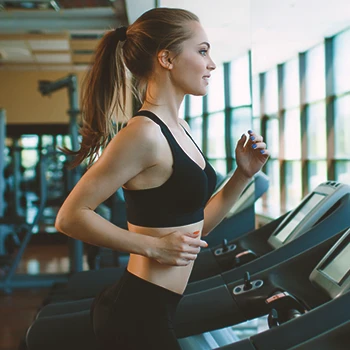
LISS stands for low-intensity steady state and is a form of steady-state cardio.
LISS, or Low-Intensity Steady State, is a workout method where you keep a low-to-moderate intensity consistently.
It's different from HIIT's high-energy bursts, as LISS involves activities like walking, light jogging, cycling at a moderate speed, swimming, or using an elliptical machine or quality stair climber at a comfortable pace.
The goal? Keep your heart rate up but not maxed out, making it a sustainable and longer exercise session.
Benefits and Drawbacks of HIIT and LISS

Here are the benefits and drawbacks of both HIIT and LISS workouts:
Benefits of HIIT
- Time Efficiency: HIIT workouts are typically shorter in duration compared to LISS cardio, making them ideal for individuals with limited time.
- Increased Calorie Burn: HIIT's intense intervals elevate the metabolic rate, leading to a greater burn of calories during and after the workout. This can contribute to fat loss and fat burning.
- Cardiovascular Fitness: According to the NIH, HIIT challenges the cardiovascular system, improving aerobic capacity and endurance [4].
- Muscle Preservation: HIIT workouts can help preserve lean muscle mass while promoting fat loss, which is beneficial for improving body composition.
- Versatility: HIIT workouts can be customized and adapted to various exercises, making them suitable for a wide range of individuals and fitness goals.
Related: Benefits of HIIT
Drawbacks of HIIT
- High Intensity: The intensity of HIIT may be too demanding for individuals with certain health conditions, injuries, or those who are new to exercise.
- Increased Risk of Injury: Performing high-intensity exercises without proper form and technique can increase the risk of injury.
Benefits of LISS
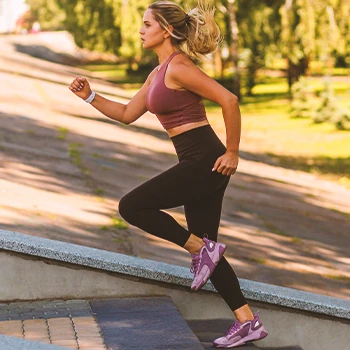
- Low Impact: According to NIH, workouts are generally gentle on the joints and muscles, making them suitable for beginners, individuals with injuries, or those who prefer a lower-impact exercise [5].
- Long-Duration Calorie Burn: LISS relies on fat as a fuel source and can provide sustained burning of fat over an extended period, contributing to fat loss.
- Cardiovascular Endurance: LISS exercises improve aerobic capacity and endurance, helping to strengthen the cardiovascular system.
- Active Recovery: LISS can be used as active recovery on rest days or in combination with other high-intensity workouts, promoting muscle recovery and reducing fatigue.
Drawbacks of LISS
- Time Commitment: LISS cardio workouts are typically longer in duration compared to HIIT, which may be a drawback for individuals with busy schedules.
- Lower Calorie Burn per Session: While LISS cardio contributes to fat loss and calorie burning, the calorie expenditure during a single session may be lower compared to HIIT.
- Limited Muscle Stimulation: LISS cardio workouts may not provide significant muscle-building or toning benefits compared to resistance training or HIIT.
“HIIT and LISS workouts offer distinct advantages depending on individual goals and preferences. HIIT, with its high-intensity intervals, stimulates greater calorie burn and can lead to improved aerobic exercise and anaerobic exercise. LISS, characterized by lower-intensity, continuous exercise, is effective for enhancing endurance and can be sustained for longer periods. The choice between HIIT and LISS should consider factors such as fitness level, available time, and individual preferences."
- Dr. Lisa Evans, Sports & Exercise Psychology Expert
Integration with Other Training Regimens
Integrating High-Intensity Interval Training (HIIT) and Low-Intensity Steady State (LISS) cardio with other forms of training can create a holistic fitness program.
- HIIT, known for its short, intense bursts of activity followed by rest, pairs well with strength training, enhancing muscle endurance and fat loss.
- LISS, such as walking or cycling, complements this by promoting recovery and cardiovascular health without overtaxing the body.
- Incorporating yoga offers flexibility, balance, and core strength, crucial for overall fitness and injury prevention.
- For sports-specific training, HIIT improves explosive power and speed, while LISS builds the endurance needed for sustained performance.
Together, these modalities ensure a well-rounded approach to fitness, addressing strength, endurance, flexibility, and recovery.
FAQs
Is It Better High-Intensity Interval Training or Low-Intensity Steady State for Weight Loss?
Both HIIT and LISS workouts can contribute to weight loss, but HIIT generally offers greater benefits outside the "fat-burning zone." The best approach for losing body fat may involve combining HIIT and LISS cardio workouts into your routine. This allows for variety, prevents plateaus, and balances high-intensity sessions and active recovery.
How Often Should You Do HIIT?
The frequency of HIIT (High-Intensity Interval Training) workouts depends on several factors, including your fitness level, recovery ability, and overall training program. As a general guideline, it is recommended to include HIIT sessions in your routine 2 to 3 times per week. This allows for sufficient recovery between sessions while reaping HIIT's benefits.
How Often Should You Do LISS?
The frequency of LISS (low-intensity steady state) workouts can vary based on individual preferences, fitness levels, and overall training goals. LISS is a low-intensity exercise generally considered to have a lower impact and can be performed more frequently than high-intensity workouts like HIIT. As a general guideline, you can incorporate LISS into your routine 3 to 5 times weekly.
References:
- https://www.ncbi.nlm.nih.gov/pmc/articles/PMC4657417/
- https://www.ncbi.nlm.nih.gov/pmc/articles/PMC6763680/
- https://www.ncbi.nlm.nih.gov/pmc/articles/PMC5582888/
- https://www.ncbi.nlm.nih.gov/pmc/articles/PMC8294064/
- https://www.ncbi.nlm.nih.gov/pmc/articles/PMC4612316/
About The Author
You May Also Like
